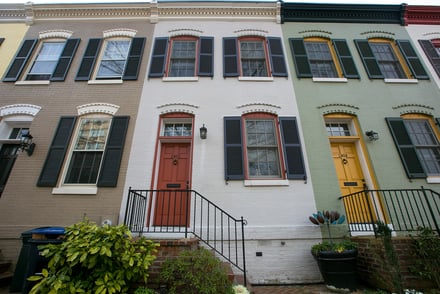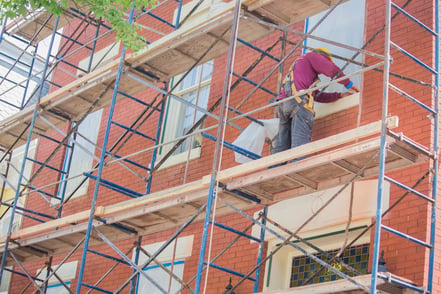In Washington DC, the exposed mortar in many old brick chimneys is particularly vulnerable to weather damage. Although the right mortar joints can last for a quarter of a century or more, they are certainly not impervious to the changes in temperature that come with the winter months. If you see signs of failing or missing mortar joints, or find that you need to replace bad bricks, come springtime, you'll want to be familiar with the right repair options for your old brick chimney.
How Will I Know if My Chimney Needs Attention?
If you have a working chimney that's inspected and/or cleaned at regular intervals, your contractor tests the mortar joints as part of the inspection. On the other hand, if you have a decorative chimney and prefer a DIY approach, you can visually inspect your brick chimney, and look for signs of failing or missing mortar joints between the bricks. You may need to follow up with what is known as a probing test, using a small knife to determine whether the mortar is loose and crumbling, or falls out easily with digging. In any of those cases, the repair of your old brick chimney is imminent.
How Are Brick and Mortar Damaged by the Weather?
Winter weather in DC can be all over the place: one day rain and wind mix to become sleet, and subsequently, snow. When the next day dawns, the weather might be sunny, crisp and clear. These temperature changes slowly damage your masonry joints. With these fluctuations, moisture is absorbed into brick and mortar as the water expands and contracts. Because it's softer than brick, mortar requires repair and tuckpointing when thermal expansion causes water damage.
The Right Options for Brick Chimney Repair
The extent of brick chimney repair in historic homes, specifically those built prior to World War II, will generally depend on the condition of the bricks. A process known as tuckpointing brick, also referred to as repointing, involves removing and replacing some of the old mortar with lime-based mortar. Some old brick chimneys require additional repair and replacement of loosened or damaged bricks. In cases of extreme damage, the entire structure might even need to be replaced.
Why is it Necessary to Use Lime Mortar?
Washington DC brick homes built in the 18th, 19th and early 20th centuries were constructed of clay coal-fired bricks assembled with lime mortar. Lime mortar is completely different from cement or concrete in both its composition structure, as well as its levels of hardness or softness. Keep in mind that the more modern building materials are best suited for new construction, and are not really appropriate for renovation of historic masonry structures.
Tuckpointing an old masonry chimney requires a skilled professional with experience using traditional masonry materials and tuckpointing methods. When done correctly, a brick chimney repair will ensure continuing structural integrity for many years to come.
Renaissance Development, the leader in old brick restoration and historic preservation, is a specialist in the exterior repair of brick chimneys in Washington DC. If you see signs of loose and crumbling mortar, contact us to discover the right repair options for your old brick chimney.
Tags:
Repair, Restoration, Exterior brick, Tuckpointing job, chimney inspection, Spot tuckpointing, preventive maintenance, Old brick chimney, old brick12/9/22 10:30 AM


